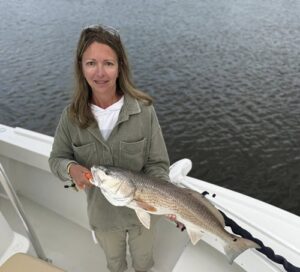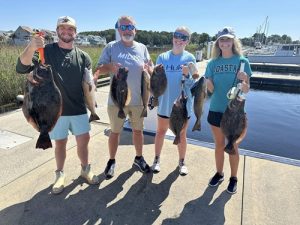Inshore Fishing Tips for Beginners: How to Make Every Cast Count

Getting into inshore fishing can feel exciting but slightly overwhelming at first. There’s gear to choose, conditions to understand, and techniques to try. Still, once you get the hang of it, this type of fishing becomes one of the most enjoyable and accessible ways to spend time on the water.
This guide builds on the basics to help beginners feel more confident and prepared. Whether you’re heading out on a boat, fishing from a pier, or trying your luck from the shoreline, these tips will help make each trip more successful and enjoyable.
Why Inshore Fishing Is So Beginner-Friendly
One major reason inshore fishing works so well for beginners is that it takes place close to the coast. Since you’re fishing in shallow waters, you avoid the high waves and long travel times associated with offshore trips. As a result, you can fit more action into a shorter outing and enjoy calmer, more manageable conditions.
In addition, inshore areas are often full of fish. These shallow habitats offer food and shelter, so species like redfish, flounder, and seatrout stick around and feed regularly. That means more chances for a bite, even if you’re still learning the ropes.
Understand the Water Before You Cast
Before you make your first cast, take a few minutes to study the water. Tidal movement plays a big role in inshore fishing in Myrtle Beach SC. For instance, as the tide rises, small baitfish move into grassy flats, and larger fish follow. On the other hand, as the tide falls, predator fish may gather at drop-offs or channels where bait gets funneled.
Paying attention to current flow, water clarity, and bottom structure gives you clues about where fish might be feeding. It’s not just about luck—it’s about learning to see what’s happening below the surface.
Inshore Fishing Gear That Gets the Job Done
You don’t need high-end gear to get started. A spinning rod with medium action and a saltwater-safe reel is often enough for most inshore species. As for line, braided or monofilament options both work depending on your personal preference.
Live bait like shrimp or cut fish often brings quick results. Even so, soft plastic lures, topwater plugs, and jig heads can be just as effective—especially when you want to cover more water or avoid messy bait.
After each trip, be sure to rinse your gear with fresh water. Because salt can cause long-term damage, this simple step helps protect your equipment and save money in the long run.
Top Inshore Fishing Techniques to Try

Drift fishing is one of the easiest methods for beginners in Myrtle Beach SC. In this style, you let the wind or current slowly move your boat while you cast or drop bait. Because the boat stays in motion, you can cover more ground and increase your chances of a strike.
Bottom fishing works well too. By anchoring near underwater structures—such as docks, oyster beds, or rocky areas—you target bottom-dwelling fish like flounder or sea bass. If you’re fishing from a pier, you can use the same method by simply lowering your line straight down and waiting for a bite.
In some areas, flounder gigging is another option. Typically done at night, it involves spotting flounder with bright lights and using a multi-pronged spear to catch them. While it takes practice, many beginners find it surprisingly enjoyable and effective.
Don’t Ignore the Weather or the Wind
Not only does water movement matter, but the weather can change your day entirely. On overcast days, fish tend to move more freely and may not hide as much. In contrast, during bright sunlight, they might stay close to cover like grass beds or under docks.
Wind helps in some cases by stirring up the surface and making fish less cautious. However, too much wind can make casting difficult and stir up silt, making visibility poor. Whenever possible, plan your trip during stable, mild conditions for the best results.
Practice Makes Better—Not Just Perfect
Every inshore fishing trip in Myrtle Beach SC teaches something new. If you’re not getting bites in one area, change your approach or location. For example, if fish aren’t reacting to a moving lure, try letting it sit or switching to live bait. Similarly, if you’re casting into open water with no action, move closer to structure.
Keep a mental note—or better yet, a small journal—of what worked and what didn’t. Over time, patterns will start to emerge. Eventually, you’ll know which tides are productive, which lures perform best, and how different fish behave at different times of day.
Make the Most of Every Trip
Even if you don’t catch much the first few times, don’t get discouraged. Each outing builds skill and confidence. The more time you spend observing the water, adjusting your casts, and testing different setups, the quicker you’ll grow as an angler.
Also, don’t be afraid to ask others for advice. Most experienced anglers remember what it was like to be a beginner, and many are happy to share tips or recommend spots to try. You might even pick up techniques that save you time or increase your catch rate.
Be Prepared, Stay Safe, and Respect the Environment
No matter how casual your trip with Captain Smiley Fishing Charters LLC. feels, safety always comes first. Wear sun protection, bring plenty of water, and carry a small first-aid kit. If you’re on a boat or kayak, use a life jacket. If you’re on foot, check the tides to avoid getting stuck in rising water.
Also, treat fish and their habitat with care. If you catch something too small or not worth keeping, handle it gently and release it quickly. Avoid trampling sensitive areas like seagrass or shell beds, and never leave trash behind.
Call Captain Smiley Fishing Charters LLC. now to get expert help with planning your inshore fishing trip, choosing gear, or finding the best local spots—it’s your turn to cast, catch, and come home with a story.
Like our Facebook page for more information.
Captain Smiley Fishing Charters LLC.
4495 Baker St
Little River, SC 29566
(843) 361-7445
https://www.captainsmileyfishingcharters.com
catch@captainsmileyfishingcharters.com

